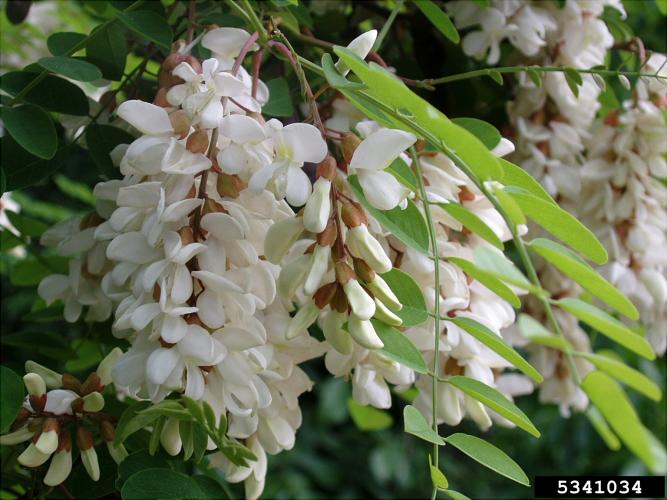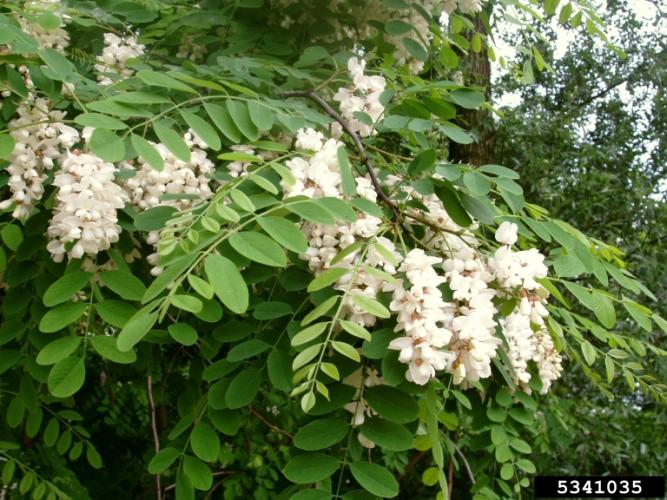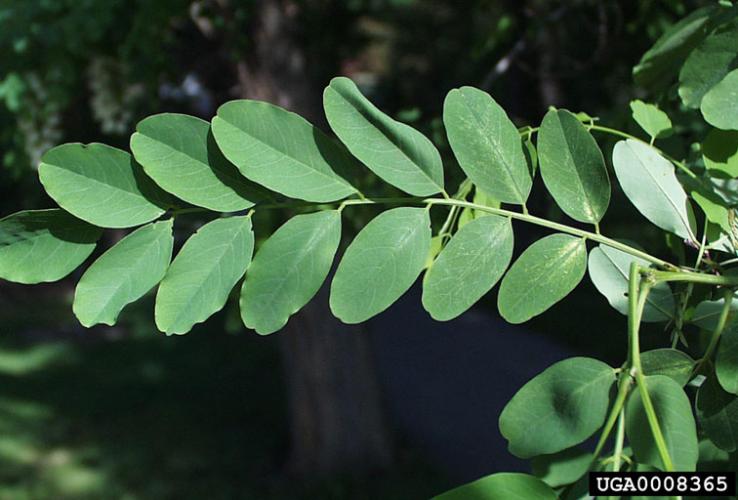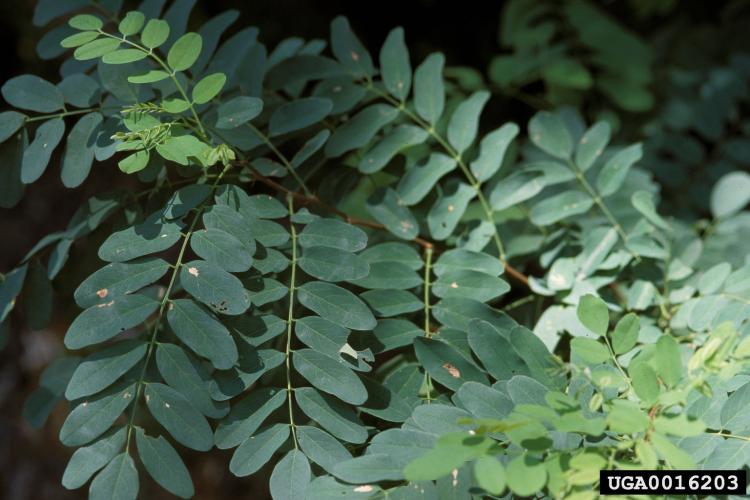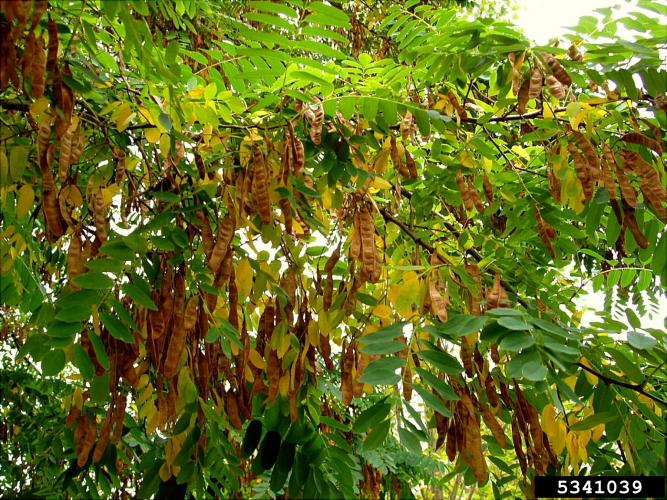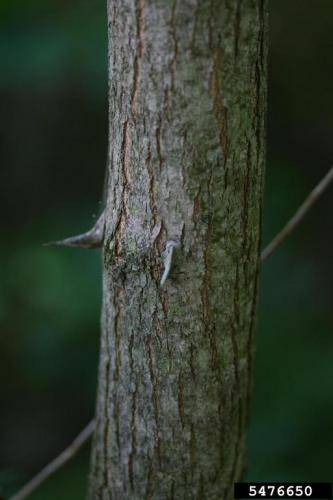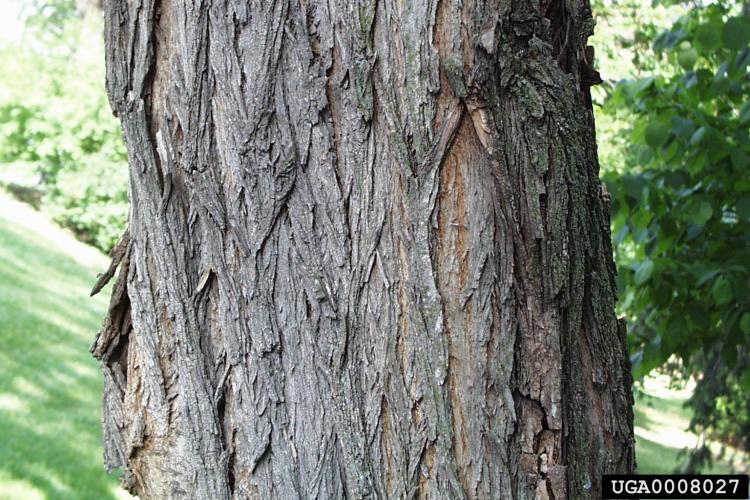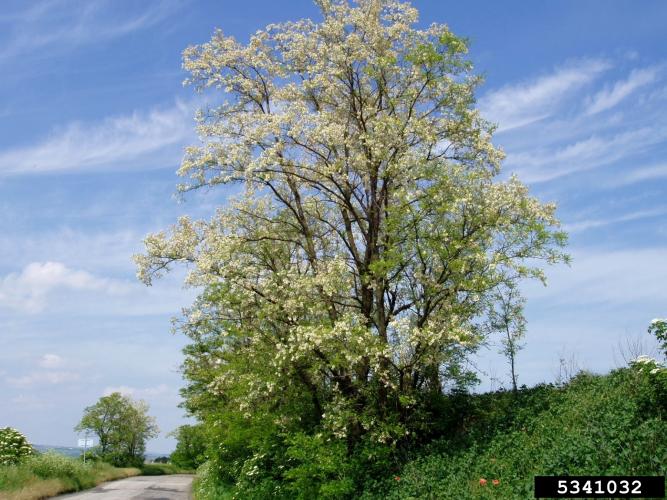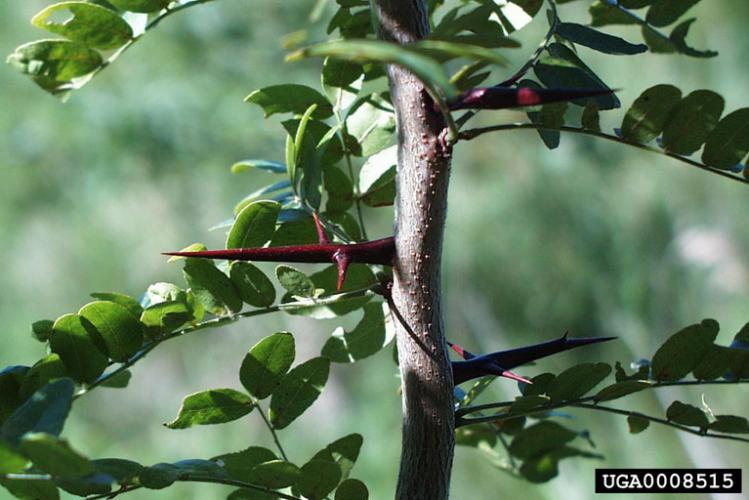Black Locust
Identification
Appearance
A deciduous tree that, while native to parts of the United States, has spread to and become invasive in other parts of the country. Trees grow from 40-100 feet in height. Trees grow upright in forests, but develop an open growth form in more open areas. The bark of black locust is light brown, rough, and becomes very furrowed with age.
Foliage
Leaves are pinnately compound with 7-21 small, round leaflets per leaf. Leaflets are 1.5 inches long. A pair of long, stipular spines is found at the base of most leaves.
Seeds
Black, hard-coated, in a flat, bean-like pod, 2-4 inches long.
Flowers
Flowering occurs in the spring, when showy, fragrant, white to yellow flowers develop in 8 inches long clusters.
Biology
Ecological Threat
Once introduced to an area, black locust expands readily into areas where their shade reduces competition from other (sun-loving) plants. Dense clones of locust create shaded islands with little ground vegetation. Lack of ground fuel limits the use of fire in natural disturbance regimes. The large, fragrant blossoms of black locust compete with native plants for pollinating bees.
Origin
Southeastern US and Appalachian Region
Habitat
Along streams, rivers, fields, meadows, disturbed areas, forest edges
Life Cycle
Fragrant white flowers appear in drooping clusters in May and June and have a yellow blotch on the uppermost petal. Fruit pods are smooth, 2 to 4 inches long, and contain 4 to 8 seeds. Two other locusts native to the Appalachians, Robinia viscosa (with pink flowers), and Robinia hispida (with rose-purple flowers), are used in cultivation and may share black locust’s invasive tendencies.
Vermont Distribution
Citations
Photo Credit
5341035, 5341034, 5341039,5341032, Jan Samanek, Phytosanitary Administration, Bugwood.org
0008365, 0008027, Paul Wray, Iowa State University, Bugwood.org
5476650, Chris Evans, University of Illinois, Bugwood.org
Information Credit
1. Molonglo Catchment Group, Black Locust
